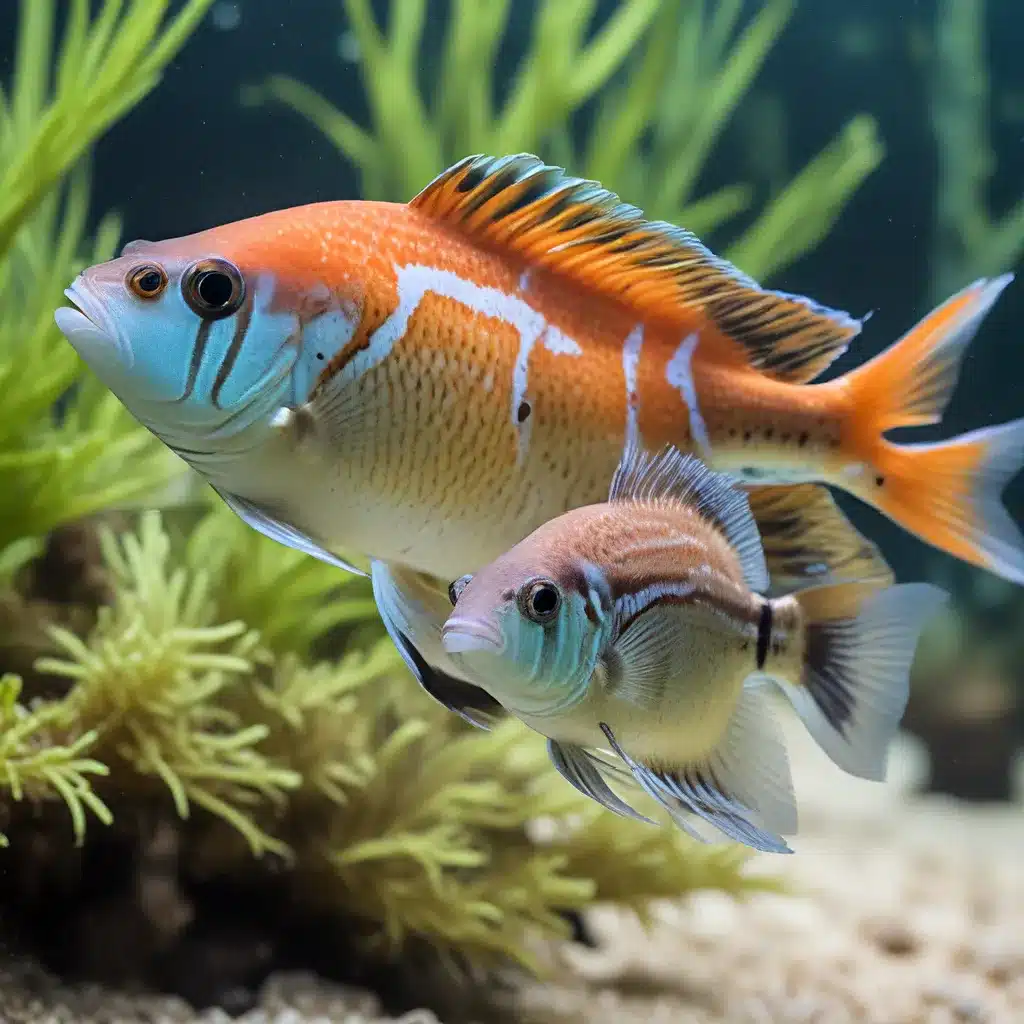
Aquarium enthusiasts have long been fascinated by the intricate social behaviors of their finned friends. From the graceful schooling of tetras to the vibrant color displays of bettas, the social dynamics within an aquarium ecosystem can be both captivating and challenging to understand. In this article, we’ll delve into the fascinating world of aquarium fish socialization, exploring how to create harmonious communities and foster thriving environments for your aquatic companions.
Establishing a Balanced Community
When it comes to stocking an aquarium, the old adage “the more, the merrier” doesn’t always hold true. Overstocking can lead to territorial disputes, aggressive behavior, and even the untimely demise of your fish. Conversely, understocking can result in bored, lethargic inhabitants and suboptimal water quality. The key to a successful aquarium lies in finding the perfect balance, where each species can thrive and coexist peacefully.
One of the fundamental principles of creating a balanced community is understanding the social dynamics of different fish species. Some fish, like guppies and platys, are inherently social and do better in larger groups, while others, such as bettas and certain cichlids, are more territorial and may require individual housing or carefully selected tankmates. By researching the specific needs and compatibility of the fish you plan to keep, you can ensure a harmonious and visually stunning aquarium.
The Importance of Schooling Behavior
Many aquarium fish, such as tetras, danios, and rasboras, exhibit schooling behavior. These fish thrive in the presence of their own kind, finding safety and security in numbers. Keeping these species in appropriately sized schools not only fulfills their natural instincts but also contributes to their overall health and well-being.
Recent studies have shown that even a school of just three fish can have a significant impact on the behavior and stress levels of the individuals within the group. When kept in smaller numbers, schooling fish may become timid, stressed, and prone to disease. By providing them with a larger, more natural-sized school, you can witness the mesmerizing synchronicity of their movements and the increased confidence they display.
Aquarium Feng Shui: Designing for Harmony
Just as the layout and design of a human living space can impact our mood and well-being, the aquascaping of an aquarium can greatly influence the social dynamics and overall health of its inhabitants. Carefully choosing the right plants, decor, and hiding spots can create a sense of security and territoriality for your fish, reducing stress and fostering a thriving community.
One key aspect of aquascaping for social harmony is providing adequate hiding spots. Fish, like many other animals, need a sense of refuge and security to feel comfortable and confident in their environment. By incorporating a variety of plants, rocks, and driftwood, you can create a visually appealing layout while also offering your fish the necessary hiding places to retreat from potential stressors.
Another important consideration in aquascaping is the spatial arrangement of the tank. Creating distinct territories and open swimming areas can help reduce territorial disputes and encourage peaceful coexistence. For example, placing taller plants or structures along the back and sides of the tank can define the boundaries of the aquarium, while leaving the central area open for free-swimming and schooling behavior.
Water Quality: The Foundation of Healthy Relationships
Maintaining exceptional water quality is the cornerstone of successful aquarium keeping. Poor water conditions can not only compromise the health and immune systems of your fish but also exacerbate social tensions within the community.
One of the most crucial factors in water quality management is appropriate filtration. Investing in a high-quality filtration system that effectively removes waste, debris, and toxic compounds can ensure a stable and balanced aquatic environment. Additionally, regular water testing and proactive water changes are essential to preventing the buildup of harmful substances that can disrupt the delicate social dynamics of your aquarium.
Research has shown that water quality parameters, such as pH, temperature, and dissolved oxygen levels, can have a significant impact on the stress levels and behaviors of aquarium fish. By maintaining these parameters within the optimal range for your particular species, you can create an environment that promotes a harmonious and thriving community.
Fostering Peaceful Coexistence
Achieving a peaceful and harmonious aquarium community requires a multifaceted approach, combining an understanding of fish social dynamics, thoughtful aquascaping, and meticulous water quality management. By carefully selecting compatible species, providing ample hiding spots and swimming areas, and maintaining a pristine aquatic environment, you can create a visually stunning and socially balanced aquarium that will bring you endless hours of enjoyment and finned friendship.
Remember, the key to a successful aquarium lies in striking the right balance: not too crowded, not too sparse, but a harmonious community where your aquatic companions can thrive and showcase their natural behaviors. With the right care and attention, your aquarium can become a captivating display of the intricate social lives of fish, inspiring awe and fascination in all who witness it.
For more aquarium care tips and insights, be sure to explore the wealth of resources available on King Aquarium, your go-to destination for all things aquatic.

